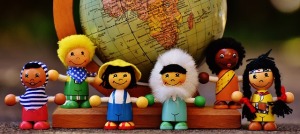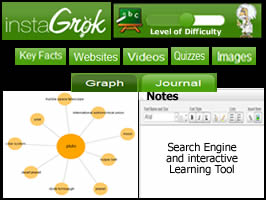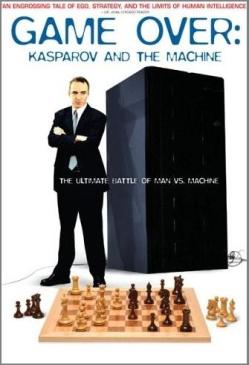Warning: th is post is long, but it’s worth the read. Trust me…muwahahahah.
is post is long, but it’s worth the read. Trust me…muwahahahah.
There are two camps of students. Those under perceived pressure to be perfect and those who eke their way through perceived mandatory drudgery. I use the word ‘perceive’ in italics because it doesn’t have to be that way: there is a third camp i.e., glamp, that life is like a game. (Bowen, 2012) asserts in chapter four that, “Empirical evidence confirms that the combination of high expectations and low stakes (exactly the conditions of a good video game) matter for learning” (Bowen, 2012, p 93). Fact: gamification + school = learning and maybe even deep learning (K. Bain, 2004; K. (University of the D. of C. Bain, 2012).
The idea that gamification promotes deep learning is not new. More than twenty years ago Mihaly Csikszentmihalyi said as much in his book Flow, “The more a job inherently resembles a game – with variety, appropriate challenges, clear goals, and immediate feedback –
the more enjoyable it will be regardless of the worker’s level of development (Csikszentmihalyi, 1990 p. 152).” Csikszenmihalyi was talking about work, but the same concepts apply to students in their chosen programs.
(Bowen, 2012) says that college should be like a video game (p 75). This statement took me back to my teens. Back to a time where if I wanted to hang out with my boyfriend, I had to watch him play endless hours of Pong. BOOOO-RING. Sure, that was the 80’s and sure, totally different situation, but my initial reaction to this reading was that video games are not a learning tool. I’m old; I can’t relate to video games. Bah-humbug.
Okay, so, having said that one thing the years have taught me is that bah-humbug is not a place to live. So I dug deep, kept reading, and realized that I have a narrow-minded view of gamification. Turns out it’s already how I live my life. I belong to the third camp: I’m a glamper!
Prospective students often picture a student life plagued by squeaky blackboards and rows of those awful plastic chairs and, “when we feel we are investing attention in a task against our will, it is as if our psychic energy is being wasted” (Csikszentmihalyi, 1990, p 160). Students won’t continue invest in something they don’t enjoy or feel forced to sit through.
So, I shook the humbug and realized that games help students learn. Why? Because in a game, they are willing participants in their own process. Concepts are taken into individual contexts and students put their own stamp on learning they alone create. “Picking a textbook and a list of topics was never a learning strategy, and ignoring that the world has changed will not impress your students.” (Bowen, 2012 p 126). The implications of bah-humbug are that nobody wins. At the end of the day, I value my students. I value their time, and I value where they are at. So to that, I humbly say: let the games begin.
So, I’ve decided to incorporate games into my work. So what? So, I feel lost in terms of where to start, but (Bowen, 2012) shares a ton of resources in chapters 5-8. I’m not a traditional teacher in front of students every day and the work I do is outreach-based. I think a place to start is to do some research around digital tools that can teach the basics better than I can. I will think about how to incorporate game-like elements such as play, challenge, rules, interactivity, inconsequential failure, feedback, and emotion (Bowen, 2012; Kapp, 2012) into my group sessions. I won’t be afraid to try things or ask students what works for them. I will experiment and practice. I will find ways to create and deliver content digitally without compromising authenticity and functionality. The options truly are endless. So what? So, the bah-humbug can’t stop me from getting my game on.
References
Alexas_Fotos. (2016). Different_Nationalities_Children. Image, Pixabay. Retrieved from https://pixabay.com/en/different-nationalities-children-1743400/
Bain, K. (2004). What the Best College Teachers Do. Cambridge, Massachusetts and London, England: Harvard University Press.
Bain, K. (University of the D. of C. (2012). What the Best College Students Do. Creative Non-Fiction, Cambridge, Massachusetts and London, England: Harvard University Press. Retrieved from http://www.bestteachersinstitute.org/kenbain.html
Bowen, J. A. (2012). Teaching Naked: How Moving Technology Out of Your College Classroom Will Improve Student Learning. San Francisco, California: Jossey-Bass.
Csikszentmihalyi, M. (1990). Flow. New York, New York: HarperCollins Publishers.
Kapp, K. M. (2012). The Gamification of Learning and Instruction: Game-based Methods and … – Karl M. Kapp – Google Books. The Gamification of Learning and Instruction. John Wiley & Sons. Retrieved from https://books.google.ca/books?hl=en&lr=&id=M2Rb9ZtFxccC&oi=fnd&pg=PR12&dq=does+gamification+improve+learning%3F&ots=JwOh54aH7K&sig=ch-2EW5crP-aWTNuqfUeBJKhq-o#v=onepage&q=does gamification improve learning%3F&f=false






 is post is long, but it’s worth the read. Trust me…muwahahahah.
is post is long, but it’s worth the read. Trust me…muwahahahah.
 never you’re starting a new job, “be a zero.” I’m paraphrasing here, but his advice is to try not to contribute much until you have your head around what the team is trying to accomplish. There is a lot of wisdom here. I am currently imbibing this wisdom with every pore while I navigate space (a.k.a. my new job).
never you’re starting a new job, “be a zero.” I’m paraphrasing here, but his advice is to try not to contribute much until you have your head around what the team is trying to accomplish. There is a lot of wisdom here. I am currently imbibing this wisdom with every pore while I navigate space (a.k.a. my new job).